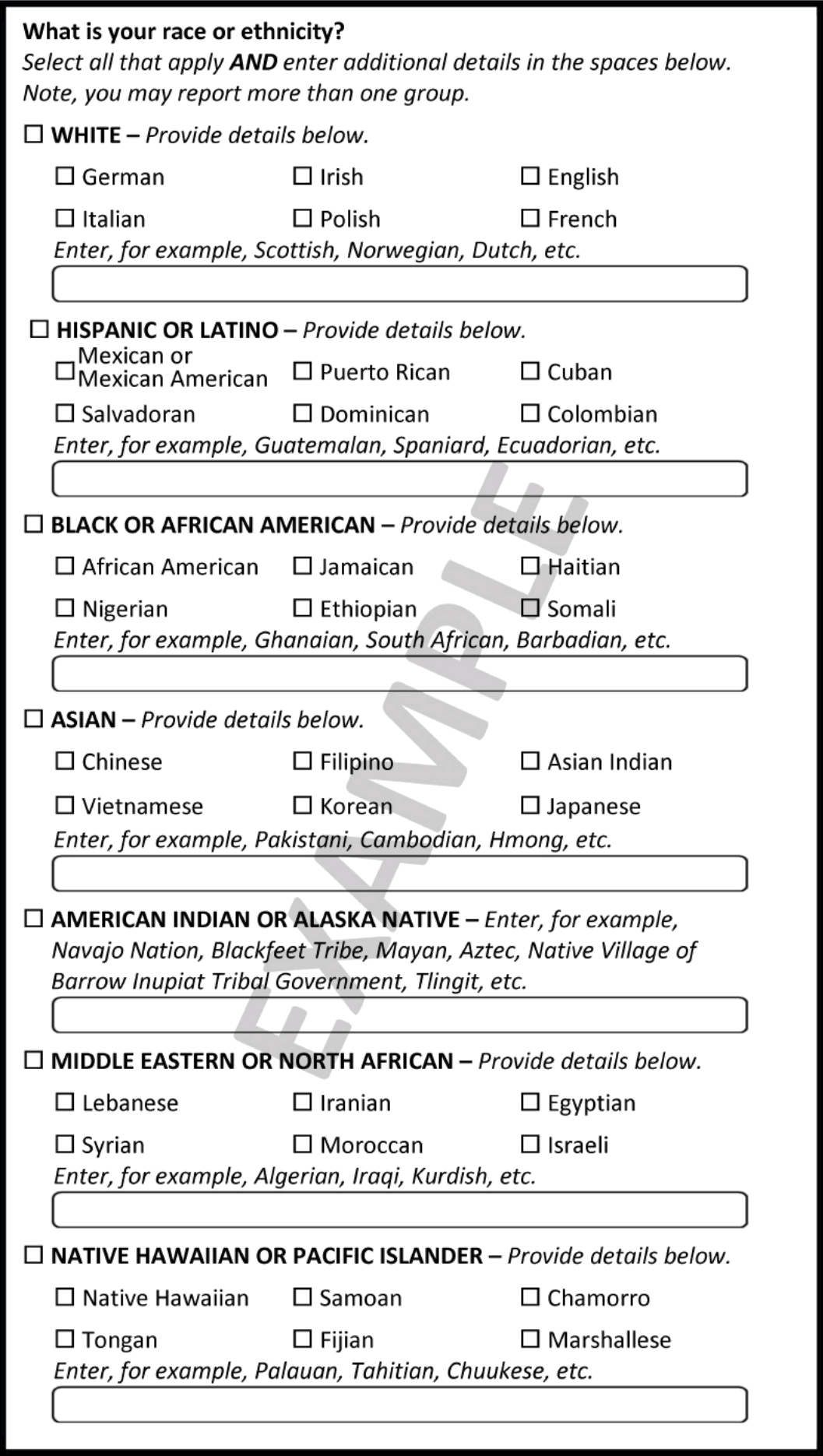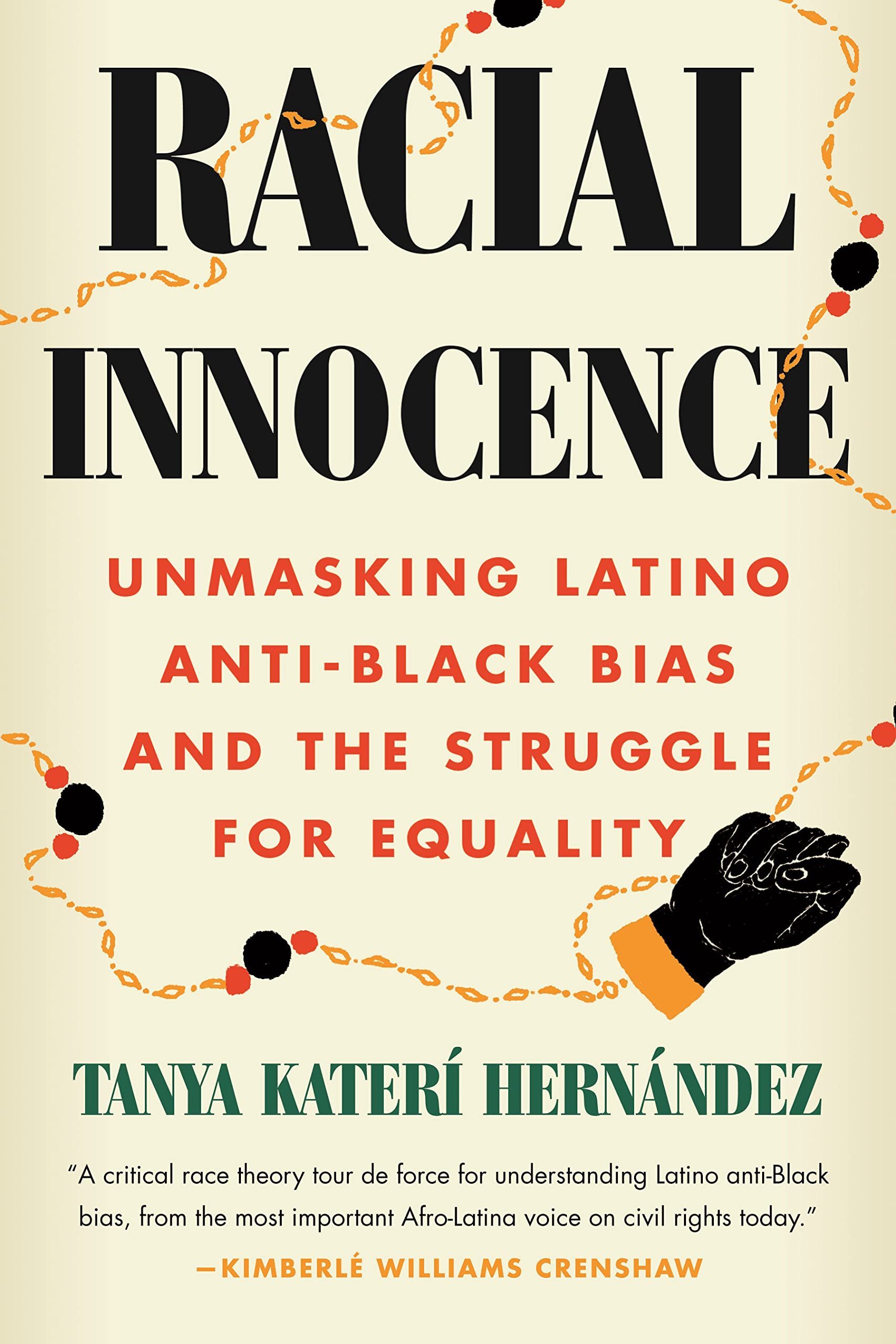The Latinx Census Racial Category Debate And How to UNITE Latinx Across Racial Differences
What race are you? For Latinx without a definitive racial identity as Black, White, Indigenous or Asian, this question can generate confusion and even annoyance. While individual identity is a highly personal matter, when a government agency or Census Bureau asks about race, its collection of the answers matter for the nationwide enforcement of civil rights and monitoring of anti-discrimination law violations. At present, the U.S. government, through its Office of Management and Budget (OMB), is proposing to change how Latinx are asked about their racial identity. It is critical that Latinx now provide feedback about what we think about the proposal. The current deadline for public commentary is April 12, 2023, but the issues at stake will need our attention long after that deadline passes.
The racial and ethnic classifications that the government devised in 1977 (and revised in 1997) were for the specific purpose of facilitating the application of civil rights laws. By comparing the demographic count of individuals by race to the statistical presence of each racial group in workplaces, housing purchases and rentals, and access to mortgages, racial disparities should be uncovered and then investigated for discriminatory practices. The current format first asks whether someone’s ethnicity is Hispanic/Latino-Origin, followed by a second question of what is their race (American Indian or Alaska Native, Asian, Black or African American, Native Hawaiian or Other Pacific Islander, Other). This two-question format recognizes that within Latino ethnicity there are racial differences.
The OMB proposal now being considered will combine both inquiries into a single question of “What is your race or ethnicity?” and collapse Latino/Hispanic ethnic identity into the list of racial categories with Black, White, Asian, American Indian, Middle Eastern, Native Hawaiian. Proposing to insert “Latino” as a category commensurate with “Black” not only situates Blackness as foreign to Latino identity it also encourages a view of the Black category as only pertaining to non-Latinx in ways that erase the very existence of Afro Latinx and discourages multiple box checking.
Part of the motivation for proposing the change to a single question format was for the purpose of lowering the number of those Latinx who in the past responded to the race question with a write-in response under Some Other Race (SOR) and offered a national origin ethnic identity (like Venezuelan or Boricua, etc.), rather than checking one or more of the existing race boxes. Under the current single-question format proposal, those Latinx would instead have the option to simply check Hispanic/Latino. This is a proposal rooted in the idea that it is better to create comfort for some Latinx respondents in their preference to avoid thinking about the relevance of racial appearance, over the needs of racially subordinated Latinx who need to have the racial identity that coexists within Latinx ethnicity also recognized. Importantly, there are other ways to address the complexity of Latinx identity that will not risk erasing the racial count of those Latinx whose racialized appearance leaves no ambiguity about the significance of race in their lives.
For Afro-Latinos and others with dark skin, the race and ethnicity OMB proposal erases how they experience racism compounded by their Blackness. We need data that can measure the existence of racial disparities amongst Latinos. As the Pew Research Center and other researchers have long noted, there are distinct social outcomes based on labor market access, housing segregation, educational attainment and prison sentencing that vary for Latinos if they are dark-skinned and especially if they are visibly Afro-Latino. This is not an insignificant population, given the fact that approximately 90 percent of the enslaved Africans who survived the Middle Passage voyage were taken to Latin America and the Caribbean. Moreover, as I methodically document in the book Racial Innocence: Unmasking Latino Anti-Black Bias and the Struggle for Equality, too often, Latino decision-makers deny Afro-Latinos access to jobs, homes, public accommodations and fair treatment in schools, and the criminal justice system.
However, for those Latinx without a definitive racial identity as Black, White, Indigenous or Asian, several dynamics interfere with their ability to become allies in the demand for racially specific data to support the needs of racially subordinated Latinx populations. It is useful to address each in turn.
“I may have light-skin and European features, but I don’t identify as White and so I can’t check a race box.”
This is a perspective that associates White identity as belonging only to Anglos and European immigrant descended persons. Yet, in Latin America and the Spanish-speaking Caribbean, many residents identify as White on government forms without any angst or the use of a Some Other Race category. In other words, the disinclination some Latinx in the United States may have with acknowledging the relevance of their White appearance is not a Latinx culturally determined discomfort with racial categories, but rather a United States-specific dynamic. Indeed, Puerto Ricans on the island of Puerto Rico have a dramatically lower use of Some Other Race as compared to Puerto Ricans within the contiguous United States. For island-based Puerto Ricans, Whiteness is not associated with Ku Klux Klan membership, or the socio-economic privilege of Anglos across the contiguous United States. Island-based Whiteness is more an identification with the legacy of Spanish conquest and a reflection of the reality that Whiteness matters in how one is socially positioned within Puerto Rico.
For other Latinx, the disassociation with the White box is tied to the ways in which they experience and observe U.S. based xenophobia and discrimination against Latinx for being Latinx alone. Anti-Latinx discrimination seemingly makes Latinx Whiteness as less White. Nevertheless, even for those light-skin Latinx who do not personally “feel White” in the United States, their White appearance accords them racial privilege denied to darker-skinned Latinx. And that is a phenomenon that the government inquiry into race is meant to measure and, in turn, address.
“I don’t look White or Black. I am Brown and don’t see that as a category on the government forms.”
In the 1960s, the Chicano movement galvanized a Brown identity aligned with Mexican indigenous ancestry as a way to articulate how they experienced discrimination and violence at the hands of state institutions as “non-Whites.” It is important to note however, that the notion of Brown is purposely vague to include Chicanos and now, Latinx of any shade. In other words, the Brown label is not a skin-shade indicator but rather a rhetorical device for referencing the discrimination that Latinx experience as Latinx (based on surname, accent, Spanish language usage, citizenship status, etc.). However, this form of discrimination is already addressed with Equality Law provisions that rely upon the census count of Hispanic/Latino ethnic origin.
For other Latinx, “Brown” is an assertion of being inherently Mestizo (as neither Black nor White, nor definitively Indigenous, but a mixture of some sort). In fact, the congressional mandate to continue including a SOR box on the census was instigated by former Representative Jose Serrano, who threatened to block funding of the census unless it included this space for Latinos to express their Mestizo identifications. Yet these Mestizo-identified Latinx do not check multiple racial boxes to indicate the mixture as government forms authorize and invite. They prefer terms of racial ambiguity like Mestizo or country-origins entered into the Some Other Race box, that evade association with specific racial origins.
Finally, Brown/Mestizo is also the way in which some Latinx attempt to express how darker skin color, regardless of racial origin, exposes them to discrimination. But what this intuitive communication regarding skin color fails to appreciate, is that skin color stratification is a dynamic that affects many other groups outside of Latinx. Using Brown/Mestizo to convey the relevance of skin color is much too imprecise with the huge spectrum of skin-color that can be subjectively included as a result of self-identification being used as the mode of response. “Brown” can mean many things to many people. Social scientists have other survey methods to more accurately measure the harm that skin color bias imposes across ethnic and racial groups outside of the census race question.
How can Latinx without a definitive racial identity as Black, White, Indigenous or Asian, become allies in the demand for racially specific data to support the needs of racially subordinated Latinx populations?
The way forward cannot be signing onto the OMB’s proposed conflation of ethnicity with race into a single question that risks obscuring the number of Afro Latinx and the monitoring of socio-economic status differences of Latinos across races that exist. Afro Latinx scholars have a variety of alternatives that are more responsive to how Latinx interact with racial questions. These other options include disentangling questions about ancestry from how others perceive you (known as socially ascribed race). Importantly, these alternatives do not deracinate Latinx and risk erasing the statistical existence of Afro Latinx. The OMB and the Census Bureau should be testing these alternatives and consulting these Latinx experts, instead of imposing the single question format as a tepid mechanism for accommodating the discomfort some Latinx have with considering the significance of race, at the very same time that nations across Latin America have reaffirmed the need for accurate race data collection for monitoring racial exclusion.
In the meantime, all Latinx would benefit from reflecting on how their personal identities (as human, Brown, Mestizo, Boricua etc.), in all their richness and complexity, can coexist with a socio-political racial identity connected to how one’s physical appearance mediates access or exclusion to opportunity. It does not make us racist to acknowledge, on a government inquiry into race, how our racial appearance is perceived by others within a social hierarchy. The first step to dismantling racism is to have data that shows the patterns of inclusion and exclusion as a tool for intervention, while at the same time remembering that no form can ever fully encompass all of what we truly are.
Tanya Katerí Hernández is an internationally recognized comparative race law expert and a professor of law at Fordham University School of Law, where she teaches anti-discrimination law, comparative employment discrimination, and critical race theory. A Fulbright scholar, Princeton and Rutgers fellow, and former scholar in residence at the Schomburg Center for Research in Black Culture, she specializes in comparative race relations and anti-discrimination law. Hernández is the author of multiple books, including Multiracials and Civil Rights: Mixed-Race Stories of Discrimination.



